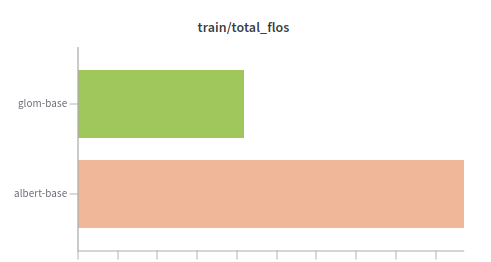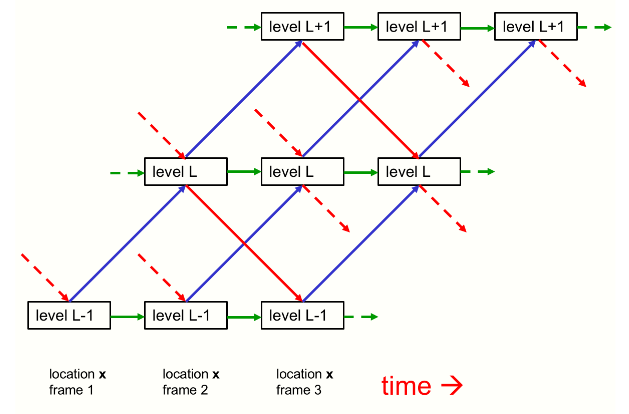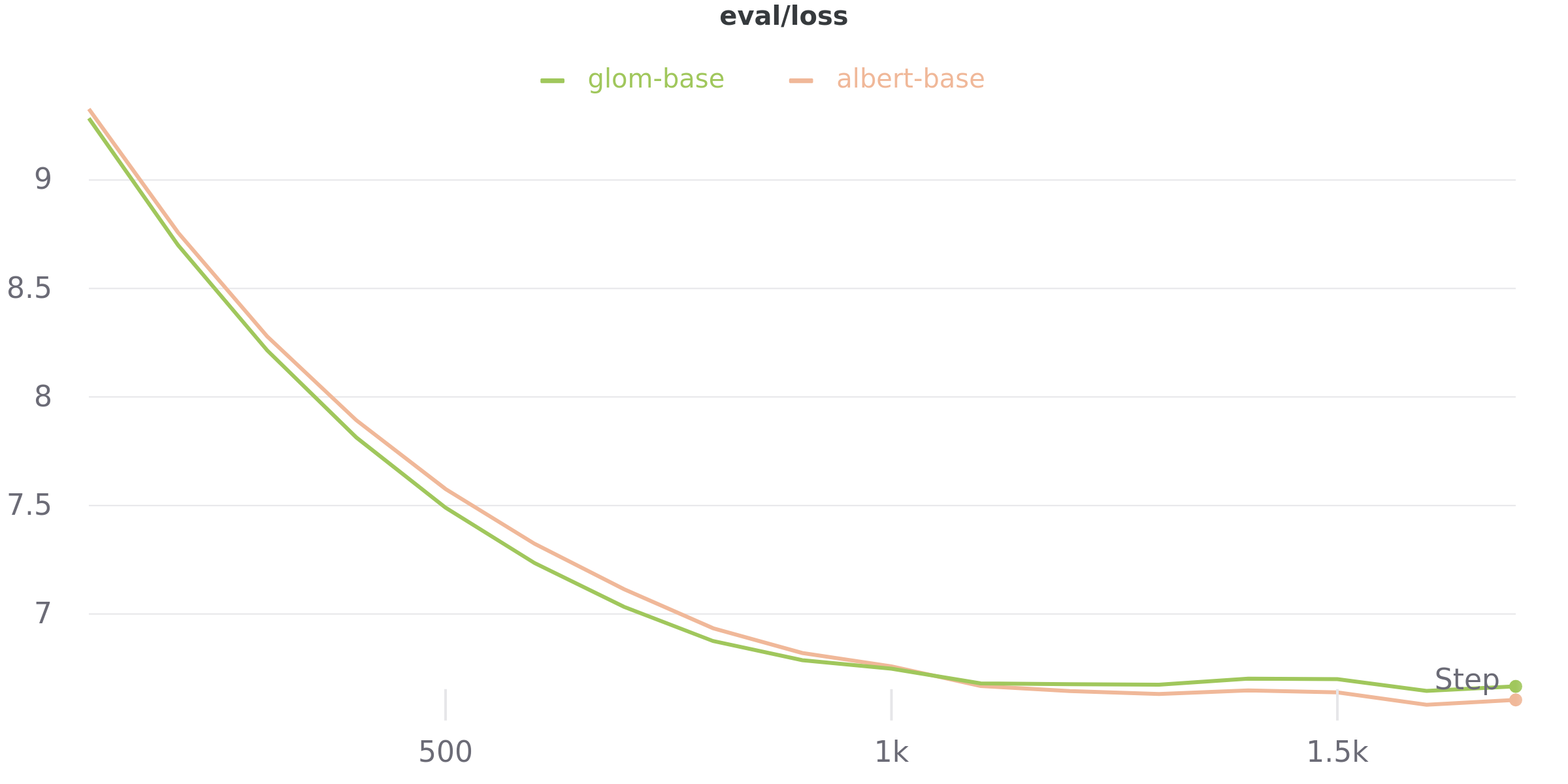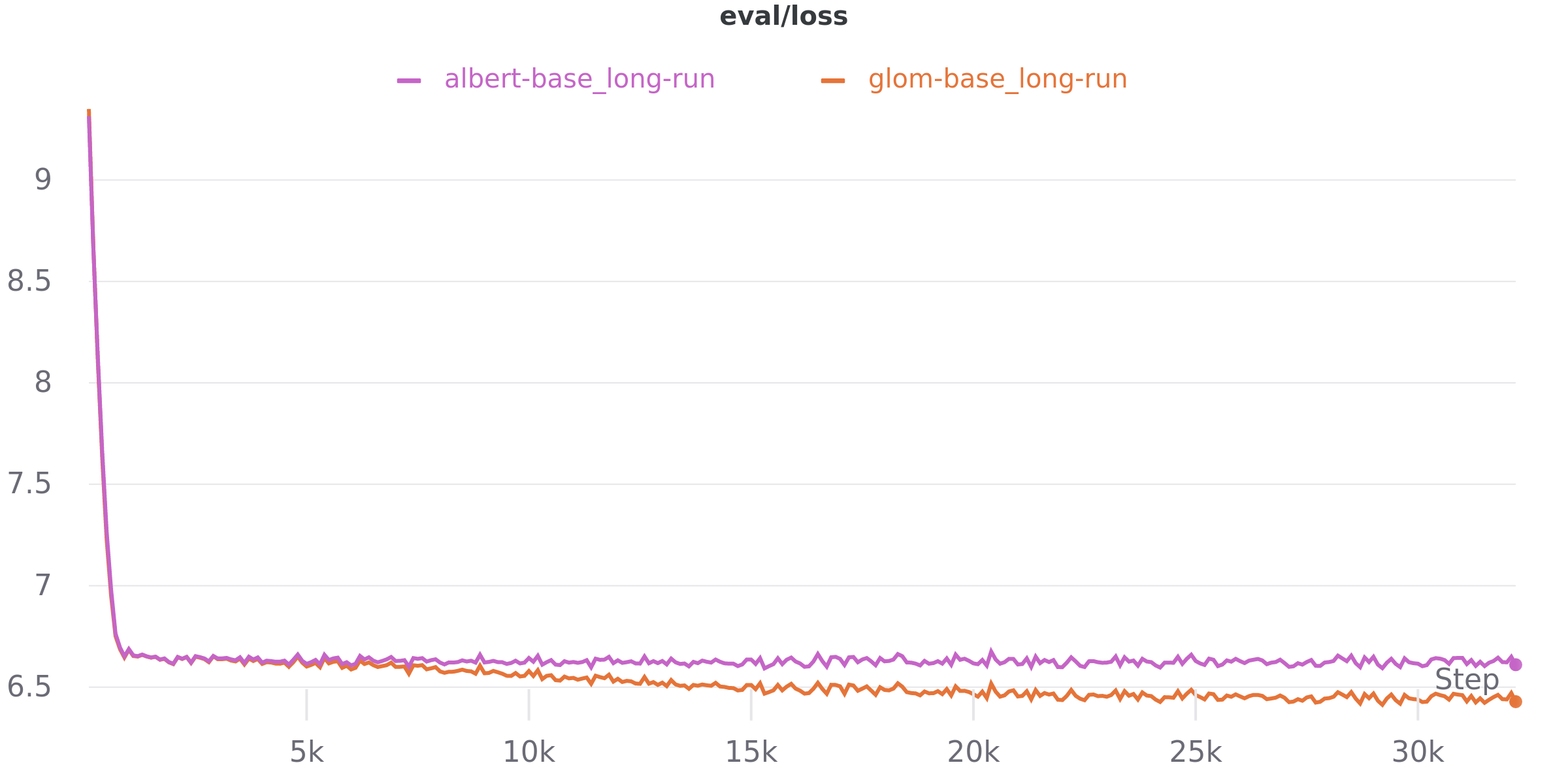This is a simple implementation of the GLOM model (paper) for the textual domain. It heavily builds on the hugginface implementation of the ALBERT model (paper).
- use t transformer layers (t=number of GLOM time steps you want to model)
- use L attention heads (L=number of GLOM levels you want to model)
- apply these small modifications to the ALBERT model:
- remove the linear projections for query, key, value; just pass through
[(d/L)*i..(d/L)*(i+1)]to the i'th head modify/constrain the dense layer that follows the attention in a way that each partitionSEE THIS CODE SNIPPET FOR THE IMPLEMENTATION OF THE ACTUAL AGRREGATION LOGIC.[(d/L)*i..(d/L)*(i+1)]of its output is only constructed by the output of the (i-1)-th, the i-th, and the (i+1)-th head (this models the access to the lower and higher GLOM levels)- remove the skip connection(s) and the MLP that sits on top of the attention layer
- for masked language model training: project the input token embedding only to
[0..(d/L)](the first level). Also, only take these dimensions from the final hidden state to predict the masked token. All other dimensions get a (position independent, but level dependent) bias as zero-timestep-input.
- remove the linear projections for query, key, value; just pass through
-
install requirements from requirements.txt
-
train a model
run_hf_mlm.py \
--config configs/glom/config.json \
--model_type glom \
--tokenizer albert-base-v2 \
--dataset_name wikitext \
--dataset_config_name wikitext-103-raw-v1 \
--do_train \
--max_examples_train 100000 \
--num_train_epochs 1 \
--do_eval \
--evaluation_strategy steps \
--logging_steps 100 \
--output_dir train/test-mlm \
--save_total_limit 1 \
--overwrite_output_dir
perplexity after 6 minutes of training: 795.4487658472486
For comparison, train a similar (has a bit more parameters) ALBERT model
run_hf_mlm.py \
--config albert-base-v2 \
--tokenizer albert-base-v2 \
--dataset_name wikitext \
--dataset_config_name wikitext-103-raw-v1 \
--do_train \
--max_examples_train 100000 \
--num_train_epochs 1 \
--do_eval \
--evaluation_strategy steps \
--logging_steps 100 \
--output_dir train/test-mlm \
--save_total_limit 1 \
--overwrite_output_dir
perplexity after 12 minutes of training (same amount of data as above): 738.9137609576597
Comparison of executed floating point operations:

Results for runs with same parameters as above, but on the whole dataset (w/o parameter --max_examples_train 100000):
- GLOM: perplexity = 623.4778409995062 (time=2:26:08)
- ALBERT: perplexity = 746.7975879565178 (time=3:55:32) (NOTE: This is worse then the short run, have to do hyperparameter search to get valid scores.)


